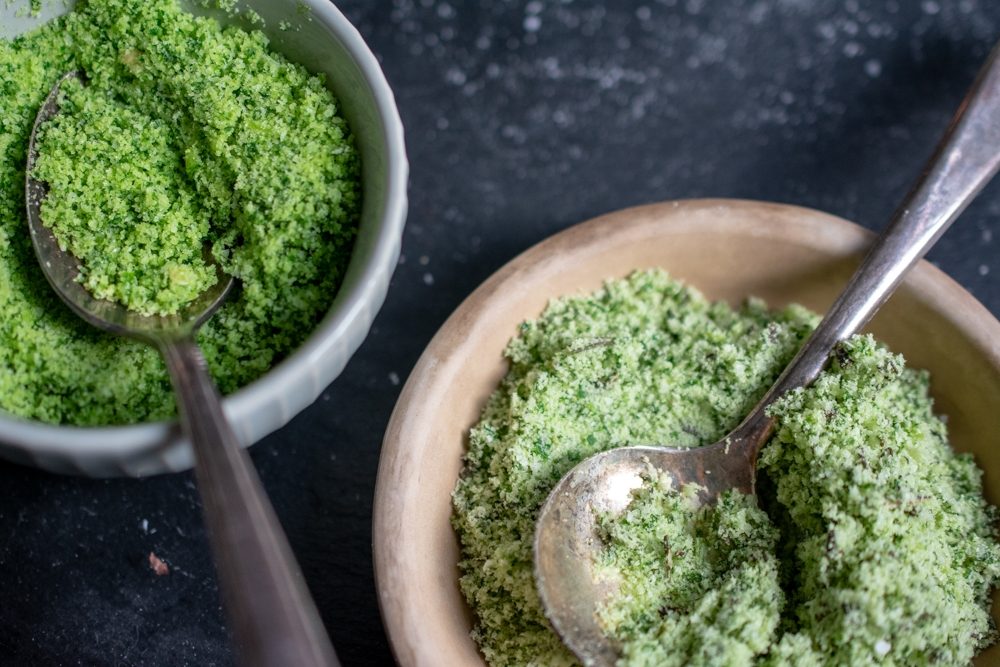Salt brings out flavor, and in the home kitchen, it’s wise to use it liberally, whether you’re sprinkling meat before it goes into the oven, mixing it into dough for baking, or adding critical finishing touches. Every home cook worth his or her salt (sorry) knows that. But we’ve discovered a way to elevate your standard crystals and add even more flavor to whatever you’re cooking, be it your go-to weeknight chicken dish or a whole roasted cauliflower.
Enter herb-flavored salts. They’re an easy way to add quick flavor to all manner of meat and vegetable dishes. We picked up a great tip from chef Alon Shaya for making them. He combines equal parts herbs and coarse kosher salt—1 to 1 ratio—and grinds them together in the food processor before storing the mix in the freezer—in a zip-close bag or sealed container—where the flavor actually intensifies.
It’s a great way to use up leftover herbs, instead of letting them go to waste.
While any blend of herbs works, we quite like:
One part sage, one part rosemary, and two parts parsley
One part thyme, five parts marjoram, five parts rosemary
Equal amounts of cilantro and parsley, plus half a serrano chili
And a word of caution about salt. Because of the different sized crystals in any given salt, be it table or kosher, you have to be careful when measuring. One teaspoon of table salt, which has small, sand-like crystals, weighs about as much two teaspoons of Diamond Crystal kosher salt.
So we plotted out a chart that lists various types of salt equivalencies by volume. One teaspoon of table salt equals one heaping teaspoon of sea salt and so forth.
You may not need to be so precise when you’re mixing up your herb blends, but it’s an important point to keep in mind.




